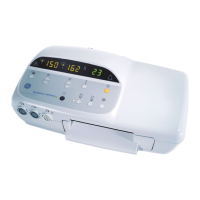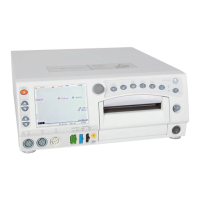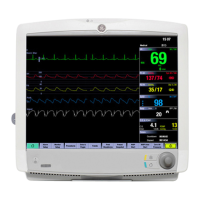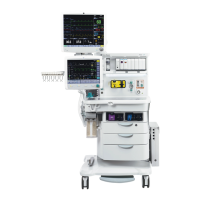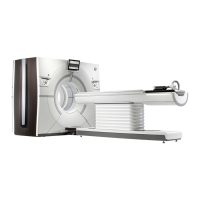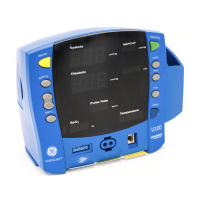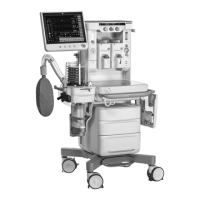4-76 120 Series Maternal/Fetal Monitor Revision B
2015590-001
Theory of Operation: Isolated Power Supply Board
Isolated Power Supply Board
NOTE: A newer, surface-mount board replaces earlier versions. Functionally, the
boards are equivalent. Refer to “Chapter 14, Replacement Parts” for further
information.
Controller
The isolated fly-back converter is based around the LT1270 (U4) high-efficiency
switching regulator. This regulator has a high-current, high-efficiency switch
included on its die along with all oscillator, control, and protection circuitry. The
LT1270 is a current mode switcher. This means that the switch duty cycle is directly
controlled by switch current rather than output voltage. The switcher was designed
to operate in the discontinuous mode with a duty cycle less than 50 %.
C5 is the input capacitor for the switcher. The input capacitor is essential for the
proper operation of the circuit. It absorbs the ripple current inherent in a fly-back
converter’s input.
The Vc pin of U4 is used for frequency compensation, soft start and external
synchronization. It is the output of an error amplifier and the input of a current
comparator. The maximum source and sink current is approximately 220 µA. The
voltage on the Vc pin determines the current level at which the output switch will
turn off. For Vc voltages below 0.9 volts, the output switch will be totally off (duty
cycle = 0). Above 0.9 volts, the switch will turn on at each oscillator cycle, then tun
off when the switch current reaches a trip level set by the Vc voltage. The control
loop frequency compensation is performed by R2 and C6.
The VFB (feedback) pin of U4 is the inverting input to a single stage error amplifier.
The non-inverting input to this amplifier is internally tied to a 1.244 volt reference.
The amplifier is a gm type, meaning that it has high output impedance with
controlled voltage-to-current gain. DC voltage gain with no load is approximately
800. The signal sent to this pin is derived from the isolated +15VISO using a linear
optocoupler (see section 3.4 Isolated Feedback).
The Vsw pin of the LT1270 is the collector of the internal NPN power switch. This
NPN has a typical ON resistance of 0.12 W and a breakdown voltage (BVCBO) of
60 volts.
The transformer T1 is not an is not an ideal component, so not all the energy stored
in the core is transferred to the secondary winding. The energy left in the primary
winding leakage inductance causes a spike on the leading edge of the switch node
voltage. Components D4, D5, R3, and C7 are used to clamp the switch node
voltage, providing a current path for the leakage inductance spike. R3 and C7 also
are used to reduce the radiated EMI created by the fast switching of large current
signals. When the internal switch of the LT1270 opens, the voltage at the Vsw pin
jumps up to approximately 30 V. R3 and C7 smooth the rising edge of this pulse
thereby reducing any high frequency ringing.

